Motivation and objectives
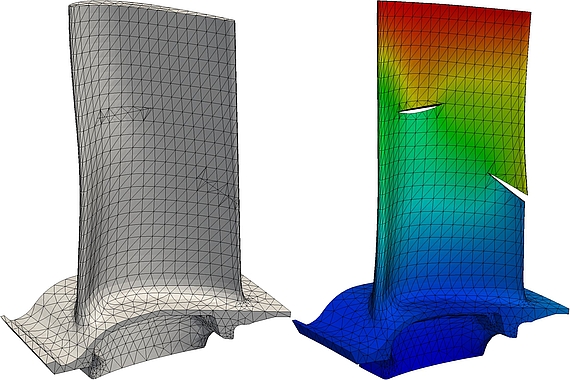
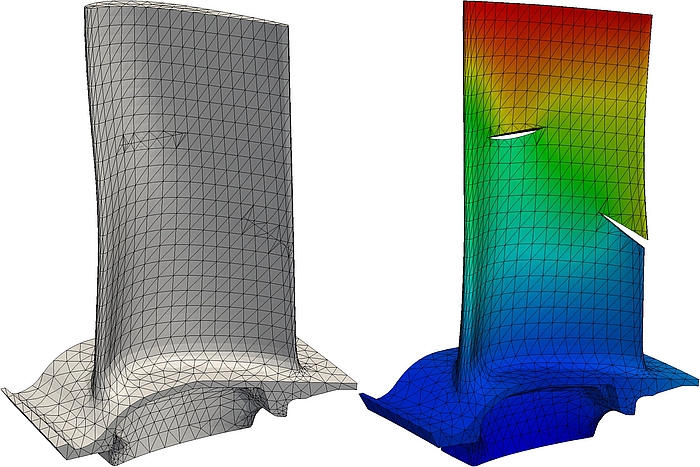
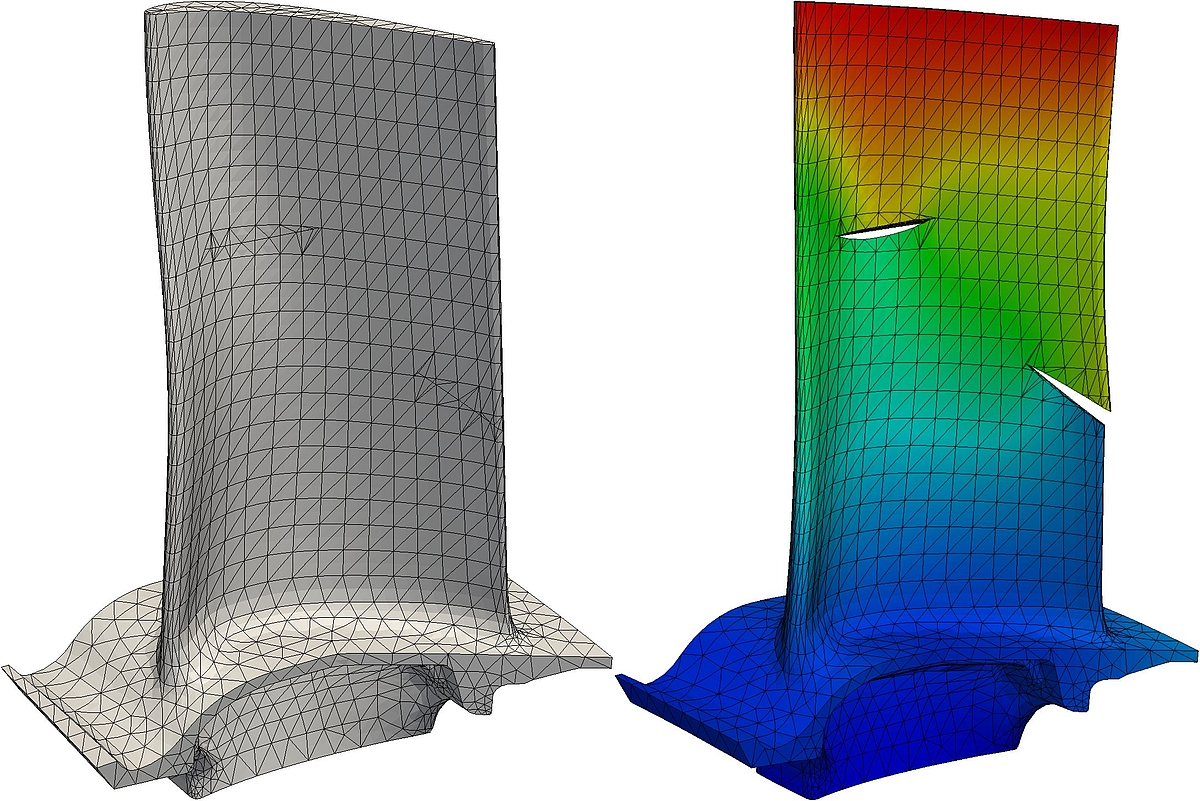
In sub-project C5, a quasi-static, multi-scale method for the simulation of cracks based on the XFEM has been developed that can take into account thermal loadings, heat conduction, non-local damage, as well as possible crack face contact to simulate regenerated parts under realistic circumstances. However, the quasi static model can only estimate the remaining life time due to an inaccurate reflection of the complex dynamic interactions. It is therefore necessary to extend the model to include inertia terms. To simulate dynamic crack growths for a large number of load cycles efficiently and accurately within reasonable computing times, the multi-timescale method WATMUS will be applied.
Results
The developed thermal-mechanical multiscale projection method can be used to investigate the interaction between micro- and macrocracks in critical parts of the domain. Heat transfer through crack surfaces has been considered by employing a contact formulation. Non-local damage has been applied as a suitable criterion to determine whether crack propagation will occur, as well as the propagating direction and propagation length. These results can be directly used to develop a three-dimensional dynamic crack growth model, which will be applied to perform simulations of multiscale dynamic crack propagations of turbine blades and blisks.
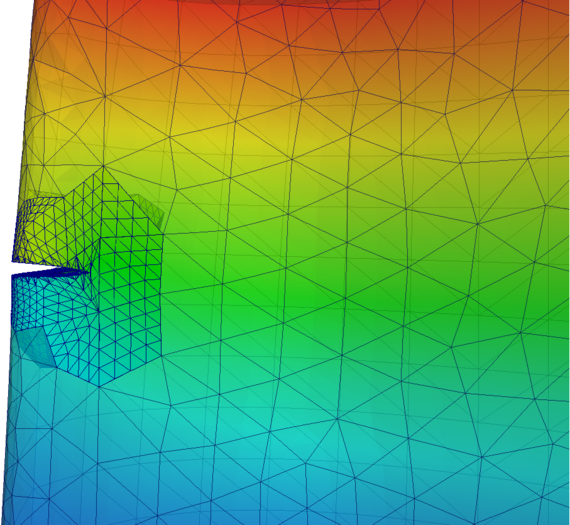
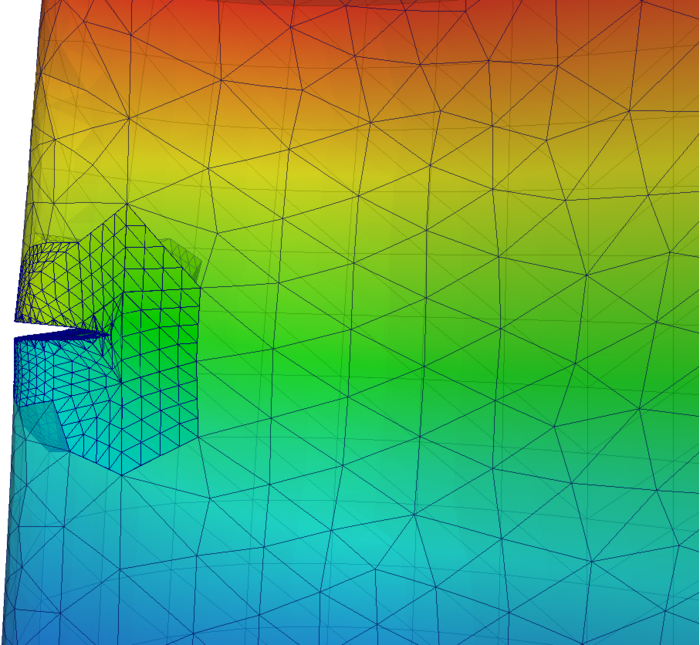
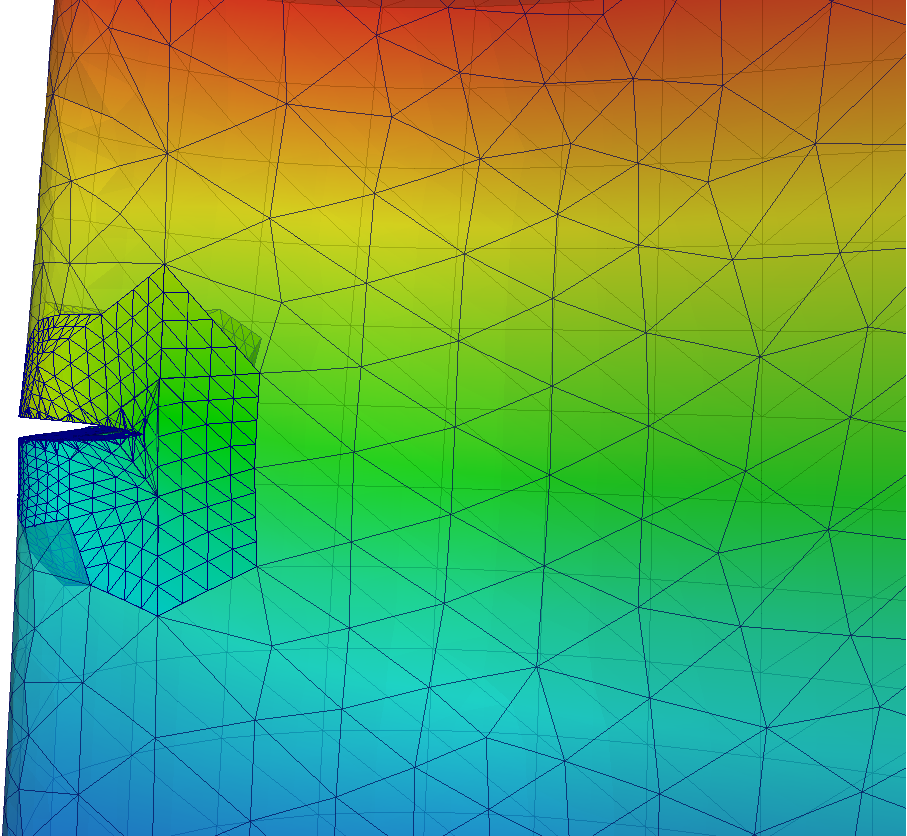
Current research and outlook
The existing XFEM implementation is extented by inertia terms at one scale. After that, the equation of motion is cupled to transient heat conduction as well as to non-local damage. The coupled equations will be solved explicitly and simultaneously for each time step. Eventually, this implementation will be coupled to the multiscale projection method.
The temperature distribution on the surface of turbine blades/blisks from CFD simulations of sub-project C3 can be applied as boundary conditions. The maximum vibration amplitude and material parameters needed for the XFEM-analysis are taken from sub-project C3.
The transient simulation of the multiscale crack propagation under dynamic excitation allows for a mor precise prediction of the remaining life time of each specific engineering part, without the necessity of empirically gathered data. Thus, within the CRC a more precise evaluation of the regeneration paths is possible.
The developed methods can be readily employed for other capital goods in the industry, such as the thermal-mechanically highly loaded drives of diesel locomotive.
Subproject leader
TU Dresden
August-Bebel-Straße 30
01219 Dresden
TU Dresden
August-Bebel-Straße 30
01219 Dresden
Staff
Publications
International Scientific Journal Paper, peer-reviewed
-
(2014): 3D multiscale crack propagation using the XFEM applied to a gas turbine blade, Comput Mech 53 (1), S. 173–188
DOI: 10.1007/s00466-013-0900-5 -
(2014): A stabilization technique for the regularization of nearly singular extended finite elements, Comput Mech 54 (2), S. 523–533
DOI: 10.1007/s00466-014-1003-7 -
(2013): An adaptive multiscale method for crack propagation and crack coalescence, Int. J. Numer. Meth. Engng 93 (1), S. 23–51
DOI: 10.1002/nme.4373
International Conference Paper, peer-reviewed
-
(2016): Aerodynamical and Strucutral Analysis of Operationally used Turbine Blades, In: 5th International Conference on Through-life Engineering Services, Cranfield, England
International Conference Paper, not peer-reviewed
-
(2017): Thermo-mechanical modeling of turbine blades taking into account structural defects, 88th Annual Meeting of the International Association of Applied Mathematics and Mechanics. Weimar, 2017
-
(2016): Thermo-mechanical contact between crack surfaces in the eXtended Finite Element Method, ECCOMAS 2016: European Congress on Computational Methods in Applied Sciences and Engineering. Crete Island
-
(2016): Thermo-mechanical contact between crack surfaces in the eXtended Finite Element Method, CMIS 2016: Contact Mechanics International Symposium. Warsaw, Poland
-
(2015): A multiscale projection method for the thermomechanical simulation of the interaction of microcracks with a macrocrack, X-DMS 2015, eXtended Discretization Methods, Ferrara, Italy, September 9-11, 2015
-
(2014): 3D error controlled adaptive XFEM simulation of ductile fracture on multiple scales, WCCM. IACM. Barcelona, 01.01.2014
-
(2013): An adaptive multiscale method for three-dimensional crack propagation in elasto-plastic media, XFEM conference. Lyon, 01.01.2013
-
(2013): Three-dimensional crack propagation in ductile media using the XFEM, CFRAC. Prag, 01.01.2013
-
(2012): A fully adaptive multiscale framework for three dimensional crack propagation using the XFEM, WCCM. Sao Paulo, 01.01.2012
-
(2012): A multiscale framework for 3D crack propagation using the XFEM, ECCOMAS. Wien, 01.01.2012
-
(2011): Crack coalescence in a multiscale framework, CFRAC. Barcelona, 01.01.2011
-
(2011): Crack propagation and crack coalescence in a multiscale framework, USNCCM. USACM. Minneapolis, 01.01.2011
Dissertationen
-
(2014): Multiscale crack propagation and crack coalescence using the XFEM, Dissertation B14/1, Institut für Kontinuumsmechanik




